Epigenetics is the study of how genes are expressed. Epigenetic testing looks at changes in gene expression that can influence a person’s health. It is a new and emerging field of medicine that holds great promise for improved disease diagnosis and treatment. However, significant challenges must be addressed before this technology can be widely adopted. This article will discuss epigenetic testing and some of the challenges faced by this new field of medicine.
Genetic ancestry tests are becoming increasingly popular. While your DNA can be used to learn about your roots, did you know that it can also reveal important things about your health risks and wellness aspects? This allows you to take proactive measures for health conditions, even before the symptoms appear, thereby preventing it. You can upload your DNA data to learn 1,500+ things about your health. Learn more.
Your genes make most of who you are and play a significant role in your health.
But other factors like your behavior, environment, diet, and physical activity levels can also greatly impact your health.
Epigenetics is the science behind how environmental and lifestyle factors can change how a gene functions or turns “on and off” depending on certain external triggers.
While the genetic makeup you are born with doesn’t change in your lifetime, epigenetic changes are reversible.
Since the latter occurs due to behavioral and lifestyle factors, modifying them can undo the epigenetic changes.
| DNA Methylation | Histone Acetylation | Non-coding RNA |
| A chemical called the “methyl group” is added to the DNA. The place where it gets attached is blocked and “not” read to produce protein. So, DNA methylation turns “off” a gene. | DNA wraps around proteins called histones. When it is tightly packed, those segments of the DNA are not “read” to make proteins. The acetylation reaction loosens up the wound DNA enough to produce proteins. | Coding RNA helps make proteins. Non-coding RNA controls how genes function by attaching to the coding RNA. It also influences the function of histones. |
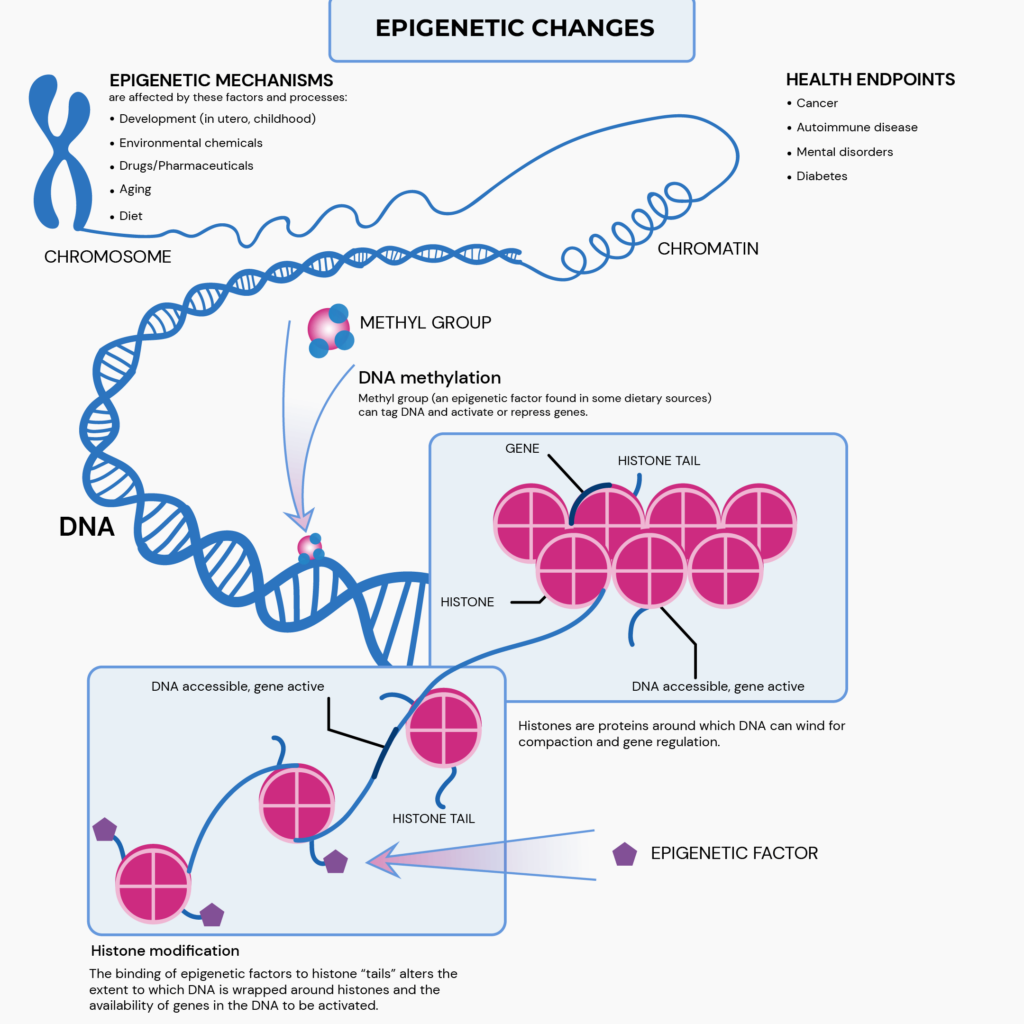
Exposure to germs can result in structural modifications to histones resulting in tighter wounding of the DNA.
This can lead to the “turning off” of some important immunity genes. Thereby lowering your immune strength and making you more prone to infections.
Methylation of certain genes that protect you against cancer, like the BRCA genes and TP53 gene, can turn them “off.”
This can lead to unrepaired DNA damage that can eventually lead to cancer.
While DNA tests provide insights into the potential disease risks you were born with, epigenetics tries to add the effect of environment and lifestyle to these results.
For example, if your DNA test results reveal that you do not have any risk variant associated with breast cancer, it likely means that you have a normal to decreased risk for the condition.
Studies suggest that higher glucose levels in one’s diet and regular alcohol consumption impair methylation frequency in the BRCA genes.
In fact, according to a study, obese individuals receive a 1.89-fold change in hypermethylation of the BRCA1 gene.
This can increase breast cancer risk, even if you are born with normal risk.
Using blood or saliva samples, some companies measure your epigenetic changes.
The results can also reveal your “true age.”
Your chronological or calendar age is how old you are from a time point of view (or the day you were born).
Epigenetic or biological age measures your age based on several biological markers.
These markers can be associated with disease risk and body functioning.
While chronological age increases at the same rate for everyone, biological age does not.
How fast you age biologically depends on your eating habits, physical activity levels, stress levels, and various lifestyle and environmental factors.
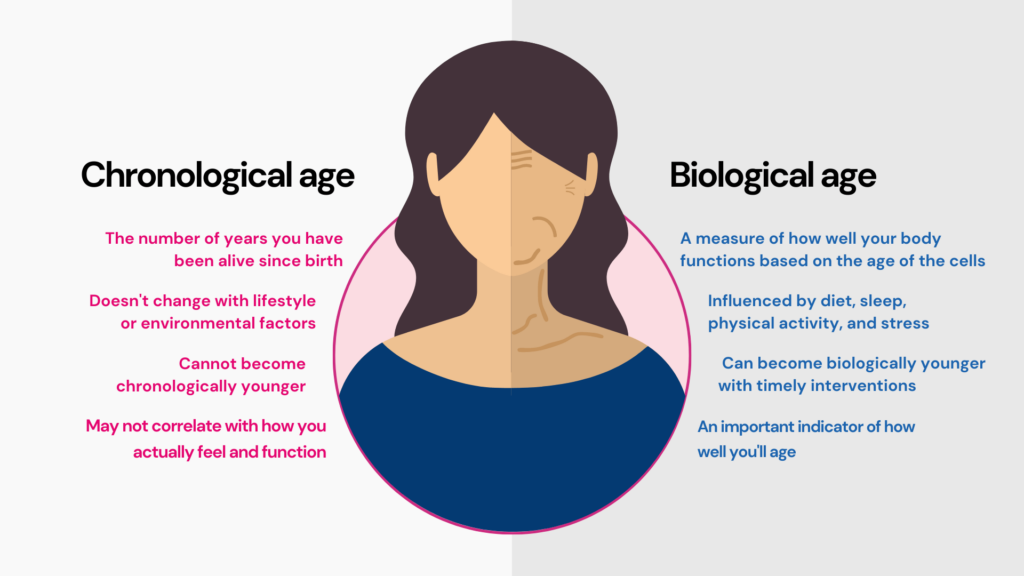
Epigenetic changes result from the normal development process, aging, and in response to your environment and lifestyle choices.
During development
Did you know that despite different cells of the body acting differently, they all have the same genes?
During growth and development, epigenetics determines what function each cell will have.
For example, your muscle and nerve cells have the same genes.
In your muscle cells, epigenetics “turns on” the muscle genes and “turns off” the nerve cell genes so that the former produces the required muscle proteins.
During aging
The epigenetic profile you are born with is not static and changes as you age.
The level of methylation decreases as we age, which can “turn on” certain “bad” genes that can increase our risk for many diseases.
With lifestyle and environment
Some epigenetic changes can be added or removed in response to changes in behavior or environment.
For example, smoking can reduce the methylation of certain parts of a gene called AHRR.
This can result in an increased lung cancer risk and mortality.
Quitting or reducing smoking can restore the methylation of this gene.
Over time, the restored methylation levels can reach that of a non-smoker.

Following the path of many direct-to-consumer (DTC) genetic testing companies, other private companies have recently started to offer DTC epigenetic testing (DTC-ET).
Most of these companies claim that the test results are medically significant, leading to an overestimation of the medical relevance of epigenetic tests.
Further, none of the DTC-ET tests are FDA-approved.
This can become extremely problematic if a consumer decides to follow recommendations from their DTC-ET tests instead of medically-approved interventions.
Epigenetics testing may uncover a new layer of sensitive information.
While genetics tests only reveal increased risks for certain conditions. DTC-ET can provide information on exposure to stress, smoke, alcohol, and other pollutants.
Uncovering these aspects of personal and social life of an individual can give rise to privacy concerns.
No guidelines describe who can access this epigenetic information and under what circumstances.
There can also be a misuse of DTC-ET; for example, a parent wanting to know whether their teenage child is using drugs or smoking.
While there are laws that protect against discrimination based on genetic test results (such as the US Genetic Information Nondiscrimination Act 2008), there are no similar laws for DTC-ET.
This warrants additional caution and accountability on the part of DTC-ET companies.
https://www.cdc.gov/genomics/disease/epigenetics.htm
https://www.bibliomed.org/mnsfulltext/53/53-1493730609.pdf?1665565499
https://www.ncbi.nlm.nih.gov/pmc/articles/PMC4890602/
https://bmccancer.biomedcentral.com/articles/10.1186/s12885-020-07407-x
Love wine but find yourself feeling a bit off after a glass or two? You're not alone! Many people have unpleasant reactions to certain components giving rise to symptoms like hives and abdominal pain. Just like some people have allergies to pollen or pets, there are individuals who may experience adverse reactions to wine due to a wine allergy. And, what’s more? Your genes influence whether you are prone to have a wine allergy. Read on to understand the telltale signs and risk factors of wine allergy and how to evaluate your risk for it.
Wine allergy is an adverse immune system reaction triggered by specific components found in wine. It is a relatively rare condition, affecting approximately 10% of the general population.
There are two primary forms of allergic reactions to wine:
It's crucial to differentiate between wine allergy and wine intolerance. While both conditions can cause uncomfortable symptoms, they are distinct in their underlying mechanisms.
Yes, someone can suddenly develop an intolerance to wine, even previously having no problems with it.
Wine intolerance is the inability of the body to metabolize or process specific components of wine, resulting in uncomfortable responses.
This can be passed down genetically or due to overtime changes in sensitivity, underlying health conditions, or lifestyle factors.
If someone suspects wine intolerance, it is recommended to consult a healthcare professional for guidance.
Several allergens present in wine can cause an allergic reaction. Some of the common allergens include:
Several studies have revealed that red wine is more likely than other types of wine to cause allergic responses.
In a 2005 study, 83 percent of participants reported symptoms such as nasal congestion, sneezing, and nasal discharge after consuming red wine.
With 31% of respondents feeling similar symptoms, white wine came in next.
According to a recent study, more people reported allergy-like symptoms after drinking red wine compared to white wine. Women were also shown to be more sensitive to wine intolerance than men.
It is truly possible to be allergic to specific wines and not others. The allergens and their concentrations can differ between different wine varieties and brands.
As a result, someone may experience an allergic reaction to one type of wine but not to another. Understanding your triggers can help you make informed choices and avoid wine allergies.
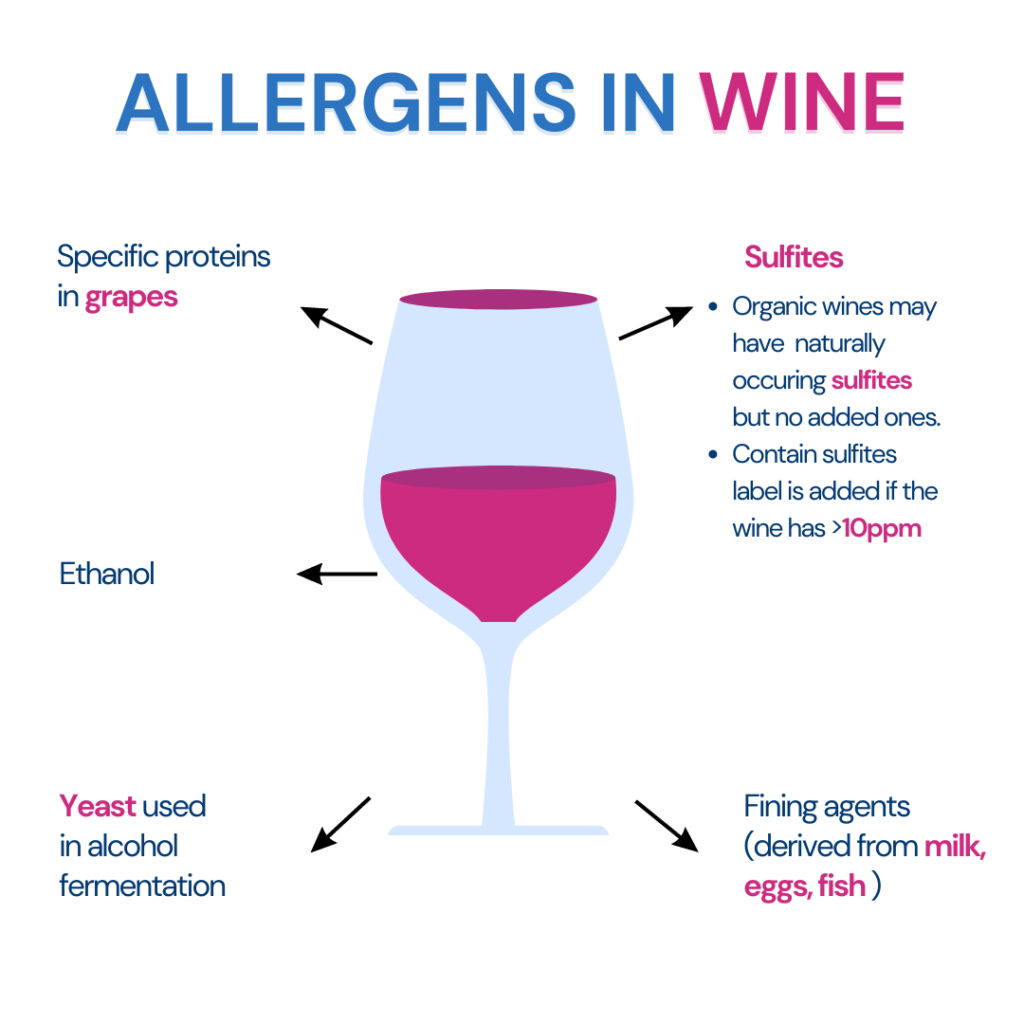
Wine allergies can cause a variety of symptoms that impact several body systems and can differ from one person to another, which commonly includes:
If you experience any of the wine allergy symptoms mentioned above after drinking wine, it is recommended that you consult with your doctor for a better treatment plan.
If you suspect any adverse reaction your body faces gradually after drinking wine, there are ways to find out if you have the specific wine allergen responsible.
If you are allergic to the tested material, you may experience redness, itching, or swelling at the testing site.
This type of testing can help identify your immune response to specific allergens found in wine, such as yeast or sulfites.
An important factor in wine allergies is the immune system.
An allergic person's immune system generates immunoglobulin E (IgE) antibodies when exposed to specific allergens found in wine.
Certain genetic variations can make a person more susceptible to producing higher levels of IgE in response to these allergens.
Histamines and other chemicals are released when IgE antibodies interact with basophils and mast cells to induce allergy symptoms.
Our bodies have different ALDH enzymes that help process alcoholic beverages.
ALDH has four forms, and one specific form called ALDH2 is responsible for breaking down a substance called acetaldehyde. When this process doesn't work properly due to gene variations, it can lead to wine allergy symptoms like flushing.
The ALDH2 gene produces the ALDH2 enzyme and comes in two variations: ALDH21 and ALDH22.
People inherit two copies of this gene, and this results in three possible combinations:
Having at least one copy of the defective ALDH22 gene reduces the enzyme's activity, causing the slower breakdown of acetaldehyde.
As a result, acetaldehyde levels increase after consuming alcohol, leading to wine allergy symptoms.
Whether you're young or old, male or female, it doesn't matter. Wine allergies can happen to anyone.
Let's explore some of the conditions where chances are more:
Identifying a wine allergy starts with recognizing allergic reaction symptoms after drinking wine. Doctors use skin pricks and blood tests to confirm the allergy to determine specific allergens.
Treatment
Note: All of these only be taken with close medical supervision.
Management
To manage wine allergy and prevent reactions:
If you suspect a wine allergy or experience allergic reactions after drinking wine, consult a healthcare professional for proper diagnosis, treatment, and management guidance.
The best approach is to manage the condition by avoiding allergens and minimizing exposure to substances that trigger allergic reactions.
Taking the advice of healthcare professionals, following recommended treatment plans, and maintaining open communication with your medical team can help effectively manage your wine allergy.
Wine allergies and intolerances can cause discomfort and adverse reactions.
Wine allergy involves an immune system that responds to specific allergens in wine leading to symptoms like skin reactions, headaches, respiratory issues, and anaphylaxis in severe cases.
While wine intolerance results from difficulty digesting components like sulfites or histamines, causing similar symptoms without immune involvement.
Common allergens in wine include sulfites, histamines, grape proteins, and fining ingredients.
Red wine is more likely to cause allergic responses than other types.
Skin prick and blood tests help identify allergens and measure the immune response.
Genetic variations, like the ALDH2 gene, can contribute to wine allergies. Anyone can develop a wine allergy, but those with previous sensitivities, asthma, hay fever, or sensitivity to wine compounds may be more vulnerable.
Managing wine allergy involves avoiding allergens, identifying triggers, and reading labels.
Prescribed antihistamines, carrying an EpiPen for severe reactions, and oral immunotherapy (under medical supervision) are potential treatment options.
By being mindful and consulting with healthcare providers, individuals can manage wine allergies responsibly and continue to enjoy wine with awareness.
https://www.healthline.com/health/wine-allergens
https://www.verywellhealth.com/wine-allergy-5218808
https://www.ncbi.nlm.nih.gov/pmc/articles/PMC6883207/
https://www.mayoclinic.org/diseases-conditions/alcohol-intolerance/symptoms-causes/syc-20369211
https://pubmed.ncbi.nlm.nih.gov/15878494/
https://www.ncbi.nlm.nih.gov/pmc/articles/PMC3391999/
https://www.nhs.uk/conditions/angioedema/
https://www.ncbi.nlm.nih.gov/pmc/articles/PMC2847274/
https://www.healthline.com/health/allergies/alcohol
https://www.ncbi.nlm.nih.gov/pmc/articles/PMC6875758/
https://www.mayoclinic.org/diseases-conditions/alcohol-intolerance/symptoms-causes/syc-20369211
https://www.mayoclinic.org/diseases-conditions/alcohol-intolerance/diagnosis-treatment/drc-20369215
We've all experienced those nights when sleep seems to be playing a game of hide-and-seek, leaving us frustrated and drained the next day. Getting a good night's sleep is crucial for our overall well-being, and fortunately, there are simple yet effective ways to improve our sleep quality. Today, we'll delve into the top three scientifically-backed methods to help you fall asleep faster, promoting better health and vitality.
Did You Know? Your ancestry test DNA data includes 700,000 markers, which can be used to learn everything about your sleep, from insomnia and obstructive sleep apnea risk to sleep patterns and sleep quality. Learn more.
According to researchers, it is generally normal for healthy individuals to fall asleep within 15 to 20 minutes after lying down. This time duration, known as sleep latency, signifies the transition from wakefulness to sleep. It's important to note that sleep latency can vary among individuals.
Some people fall asleep too quickly, while others may take longer. Sleeping too quickly or slowly may signal an underlying physical or mental health issue.
There could be various causes for your inability to fall asleep quickly. The following are five possible reasons with explanations:
Now that we have a better understanding of the reasons behind difficulty falling asleep quickly.
Let's explore the top three methods that can help improve your sleep ability.
Deep breathing exercises help promote relaxation and prepare the body for sleep. You can relax your thoughts and reduce tension by focusing on your breath and engaging in mindful breathing patterns.
Here are two popular breathing methods that will help you sleep faster.
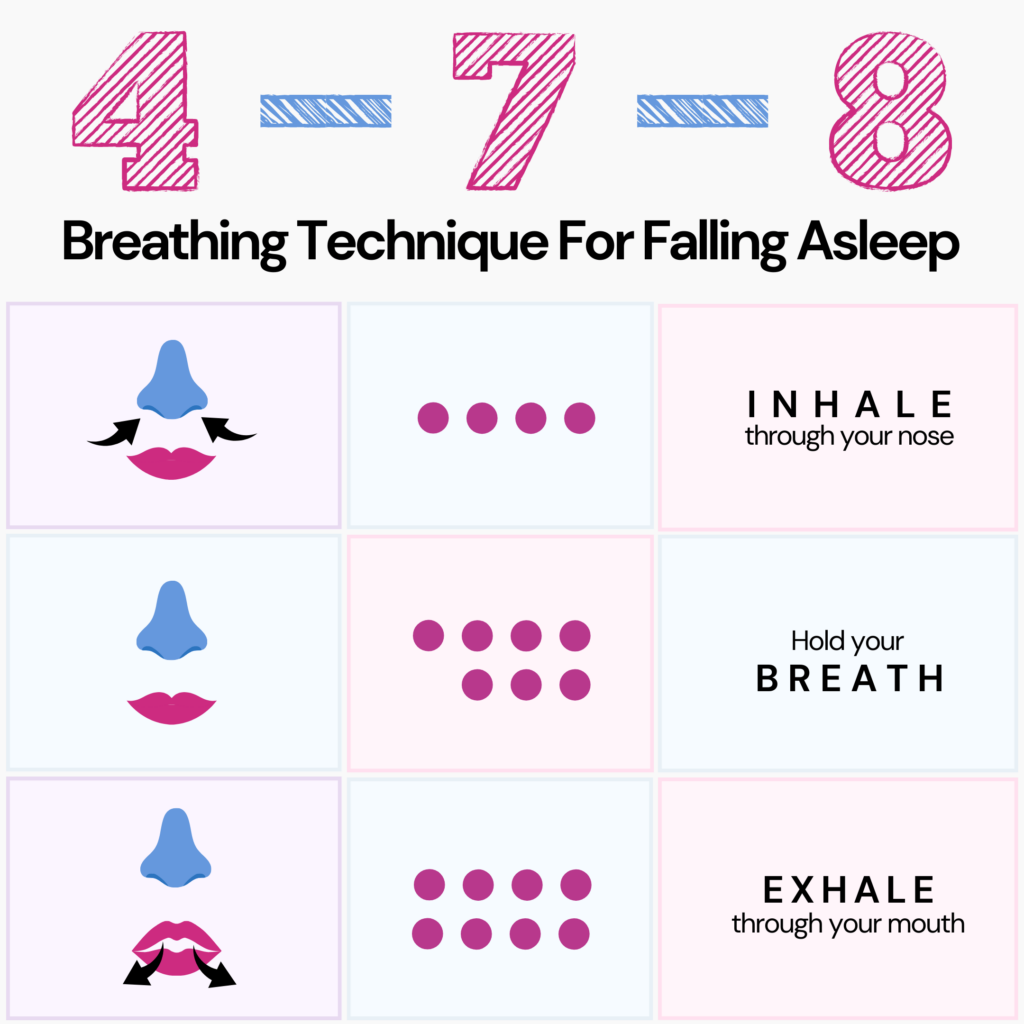
This method involves tensing and relaxing different muscle groups to promote deep relaxation. By releasing muscle tension, you can reduce physical discomfort and mental stress, allowing you to fall asleep faster.
Here's how you can practice PMR:
This technique was developed during world war II and is said to have helped the U.S. Navy preflight school airmen fall asleep in 120 seconds.
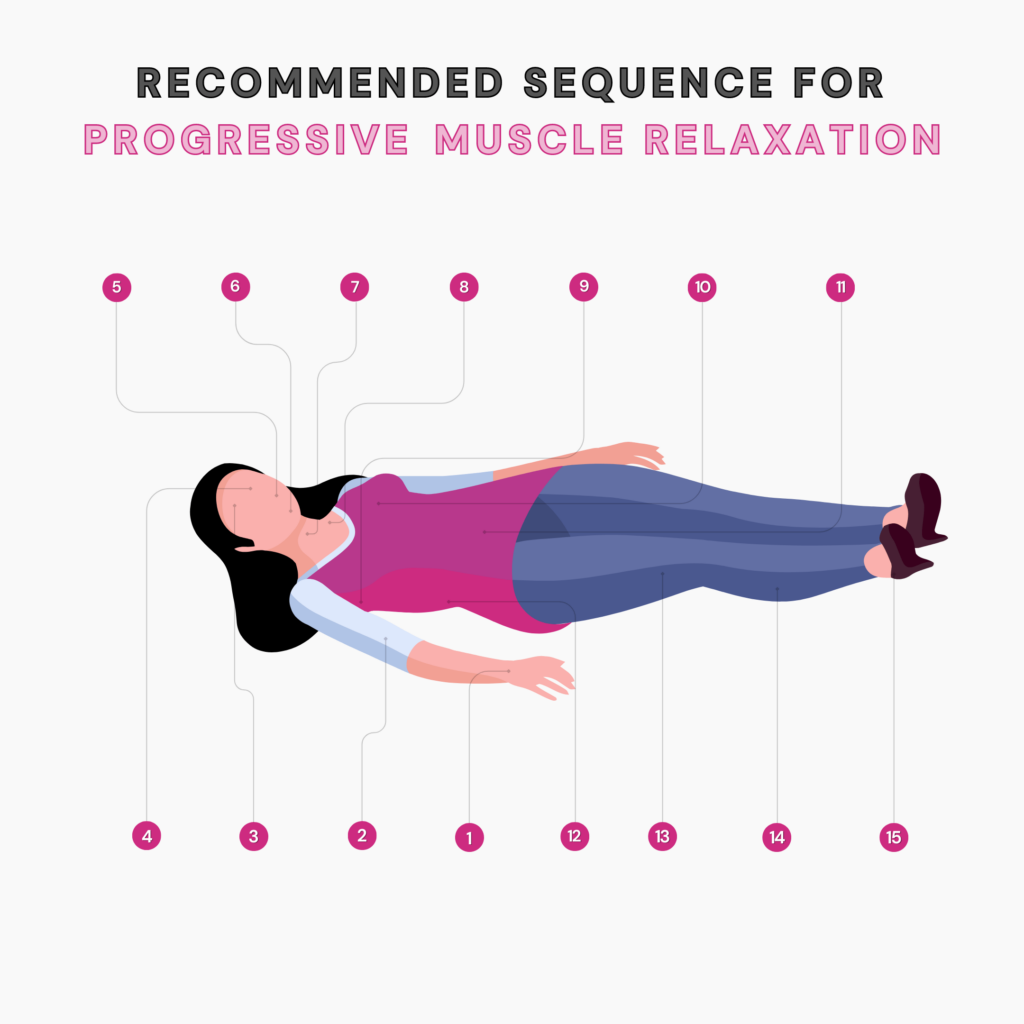
Creating a consistent nighttime routine can signal your body that it's time to wind down and prepare for sleep. Following a set of activities exclusively before bedtime can rewire your brain.
Here are some steps to establish a consistent nighttime routine:
Adding several foods to your bedtime routine can effectively promote relaxation in your body, paving the way for a truly peaceful sleep.
Here are some options to consider:
Remember that individual responses to food can vary. It is advised to consult your doctor if you have any dietary concerns or allergies.
to fall asleep faster
The Gene Sleep panel of Xcode Life includes 14 important aspects, from sleep pattern traits like your chronotype and the tendency for excessive daytime sleepiness to sleep disorders like insomnia and sleep apnea.
If you have done an ancestry genetic test with companies like 23andMe, AncestryDNA, MyHeritage, etc., you can learn your zinc deficiency risk gene status in just 3 steps.
Not yet tested?
If you're new to the world of genetic testing, we've got you covered!
You can now get your ancestry DNA kits at an additional discount!
By following the link provided in this article, you can purchase a DNA kit at 10% OFF (the discount will be reflected when you add the product).
This will ensure that you have everything you need to embark on your genetic journey.
Once you receive your kits, you can follow the instructions given by the respective service providers to collect your sample and ship it.
After you receive your DNA test results from the kit, you can upload your DNA data to our secure platform.
Falling asleep quickly is a common challenge for many individuals. By implementing the top three methods discussed in this article, you can improve your sleep initiation and enjoy a more restful night's sleep.
Remember to practice breathing techniques, engage in progressive muscle relaxation, and develop a consistent nighttime routine.
Additionally, Consider adding sleep-promoting foods to your diet per your doctor's recommendation.
Wake up refreshed, rejuvenated, and prepare to tackle the day ahead by taking proactive steps towards better sleep.
https://www.sleepfoundation.org/sleep-faqs/how-long-should-it-take-to-fall-asleep
https://www.sleepfoundation.org/sleep-hygiene/bedtime-routine-for-adults
https://www.sleepfoundation.org/sleep-hygiene/best-breathing-exercises-for-sleep
https://www.healthline.com/health/progressive-muscle-relaxation
https://www.healthline.com/nutrition/9-foods-to-help-you-sleep
Have you ever wondered if your seasonal sniffles could be more than what it seems? A new study has unearthed a surprising link between allergies and arthritis, specifically osteoarthritis. Osteoarthritis is a chronic debilitating condition that affects millions all over the world. This discovery can lead to a better therapeutic approach and better management of this condition.
Did You Know? Osteoarthritis has a high prevalence in those with low bone mineral density (BMD). Genetics is one of the significant influencers of BMD. Those with certain genetic types are at a higher risk of low BMD than others. Learn more:
Osteoarthritis is the most common type of arthritis.
It affects the joints between long bones.
When the cartilage around the bones wears down over time with age, it causes osteoarthritis.
Osteoarthritis usually affects the joints of the hands, knee, hip, and spine.
Symptoms can be managed but not reversed.
The lifetime risk of developing osteoarthritis in the knee is as high as 44.7%.
Osteoarthritis is a degenerative disease that affects the joints.
It occurs when the cartilage around long bones and joints erode over time, either due to age or due to a traumatic injury.
Some individuals might be genetically predisposed and more prone to osteoarthritis than others.
Mild symptoms start that worsen over time.
Typically, the ends of long bones are covered with protective cartilage.
In osteoarthritis, this cartilage wears off.
As a result, there is increased friction between the heads of the bones.
It leads to wear and tear and bone spurs around the joint.
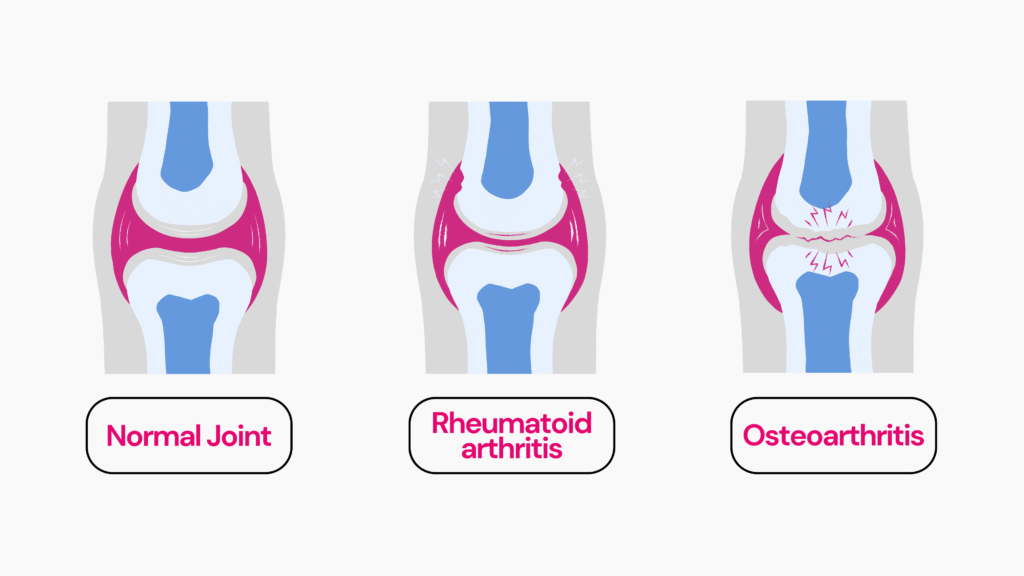
Allergy is a condition where your body reacts severely to a foreign substance.
An allergen is a substance that can trigger an allergic reaction in the body.
Common allergens include pollen, certain foods, and medications.
The purpose of the immune system is to protect the body against infection.
Sometimes, the immune system confuses harmless substances to be harmful and initiates an attack against them.
Such substances are called allergens.
When an allergen enters the body, the immune system produces antibodies to counter it.
These antibodies then "attack" the allergen and destroy it.
Common allergy symptoms include itching, wheezing, runny nose, and rashes.
A severe allergic reaction can cause anaphylaxis, a potentially life-threatening condition.
Certain types of allergies can worsen pain associated with arthritis.
It might be due to a similar immune system reaction to both conditions.
The immune system reacts to a foreign allergen or the body's tissues, and that causes inflammation.
Managing both conditions may improve symptoms and provide relief.
Rheumatoid arthritis most commonly affects joints in the hands, wrists, and knees.
Osteoarthritis affects joints in the spine, hips, and hands.
During an allergic reaction, the joints already affected by arthritis experience the worst symptoms.
Two common types of arthritis are osteoarthritis and rheumatoid arthritis.
A study conducted in 2015 suggests that people having at least one type of allergy are prone to develop rheumatoid arthritis.
It might be because of the association of rheumatoid arthritis and allergies with a chronically malfunctioning immune system.
Food allergies involving red meat, crab, and pork are associated with spinal arthritis.
Drug allergies, such as NSAIDS, are more prevalent in people who have rheumatoid arthritis.
Is Osteoarthritis Genetic?
A recent study was conducted to investigate whether people with atopic disease (a type of allergy) were at increased risk for osteoarthritis.
The results were published in the Annals of Rheumatic Diseases journal.
The researchers reviewed insurance claim data (2003-2019) and electronic health records (2010-2020).
The insurance dataset contained over 1 million people, while the electronic health records dataset contained 100,000 people.
The study had two groups of participants.
People in both groups didn’t have pre-existing OA or inflammatory arthritis
One group was named the "exposed" group.
It had people who were diagnosed with asthma or atopic disease.
The "non-exposed" group had no such diagnosis.
Both groups had a mean age of 50.
The exposed group had 60% female participants compared to the 48% in the non-exposed group.
The insurance dataset showed the exposed group had a 58% elevated chance of developing osteoarthritis.
The electronic health records dataset showed that 42% of people from the exposed group were prone to suffer from osteoarthritis.
After adjusting for multiple variables like age, gender, educational levels, etc., the researchers observed a 115% increased risk of osteoarthritis in those with both atopic dermatitis and asthma compared to the non-exposed group.
The researchers suggest that this data might indicate that allergic pathways can increase the risk of developing osteoarthritis.
for Osteoarthritis
The Gene Health panel of Xcode Life includes 47 important health aspects. 11 significant markers are analyzed for osteoarthritis.
If you have done an ancestry genetic test with companies like 23andMe, AncestryDNA, MyHeritage, etc., you can learn your osteoarthritis genetic risk in just 3 steps.
Not yet tested?
If you're new to the world of genetic testing, we've got you covered!
You can now get your ancestry DNA kits at an additional discount!
By following the link provided in this article, you can purchase a DNA kit at 10% OFF (the discount will be reflected when you add the product).
This will ensure that you have everything you need to embark on your genetic journey.
Once you receive your kits, you can follow the instructions given by the respective service providers to collect your sample and ship it.
After you receive your DNA test results from the kit, you can upload your DNA data to our secure platform.
Osteoarthritis is a common disorder that affects the joints between long bones.
The joints degenerate over time, causing friction and wear and tear between bones.
A new study reports that people suffering from atopic disease and/or asthma are at a higher risk for developing osteoarthritis.
People with both conditions have a 115% increased risk of osteoarthritis.
Maintaining a healthy body weight, controlling blood sugar levels, and protecting your joints from injuries are effective ways to prevent osteoarthritis.
https://www.healthline.com/health/allergies-and-arthritis#allergies-linked-to-arthritis
https://www.ncbi.nlm.nih.gov/pmc/articles/PMC6516833/
https://pubmed.ncbi.nlm.nih.gov/3513771/
https://www.webmd.com/rheumatoid-arthritis/rheumatoid-arthritis-food-allergies
About 75% of Americans drink morning coffee, and nearly half of them are regular drinkers.
One cup of coffee (8 oz) contains 95 mg of caffeine.
For decades, people have believed that caffeine in their coffee made them feel alert and energetic.
Researchers now think otherwise.
On comparing the neurological effects of coffee vs. caffeine, researchers have reported that coffee and not caffeine led to increased brain activity and cognitive functioning.
If so, where does this leave caffeine at? Keep reading to learn more about this study.
The relationship between the CYP1A2 gene and caffeine is a two-way street. The gene affects how you metabolize caffeine. At the same time, your caffeine consumption habit influences the activity of this gene. Knowing your CYP1A2 gene status can help you learn about your ideal caffeine consumption.
Caffeine is a natural bitter substance found in more than 60 types of plant sources.
A few of the most common sources of caffeine are:
Caffeine is a known stimulant of the Central Nervous System (CNS).
This substance activates the noradrenaline neurons in the CNS and encourages dopamine release.
Dopamine is a neurotransmitter that makes people focused, happy, energetic, and alert.
This is why most people drink morning coffee first thing in the day.
They feel the cup of coffee improves wakefulness.
Coffee is made by roasting, grinding, and brewing coffee beans.
It contains multiple compounds that affect the human body and mind, including the following:
Caffeine is the most commonly used drug worldwide.
One cup (240 g) of coffee contains about 96 mg of caffeine.
The average caffeine consumption in the United States is 200 mg/day.
Adults consume caffeine in the form of coffee and caffeinated beverages.
While low to moderate caffeine consumption is safe and beneficial, very high doses of caffeine can lead to cardiovascular problems.
Caffeine abuse can lead to a condition called Caffeine Dependence Syndrome.
This is marked by behavioral, psychological, and cognitive changes in the person.
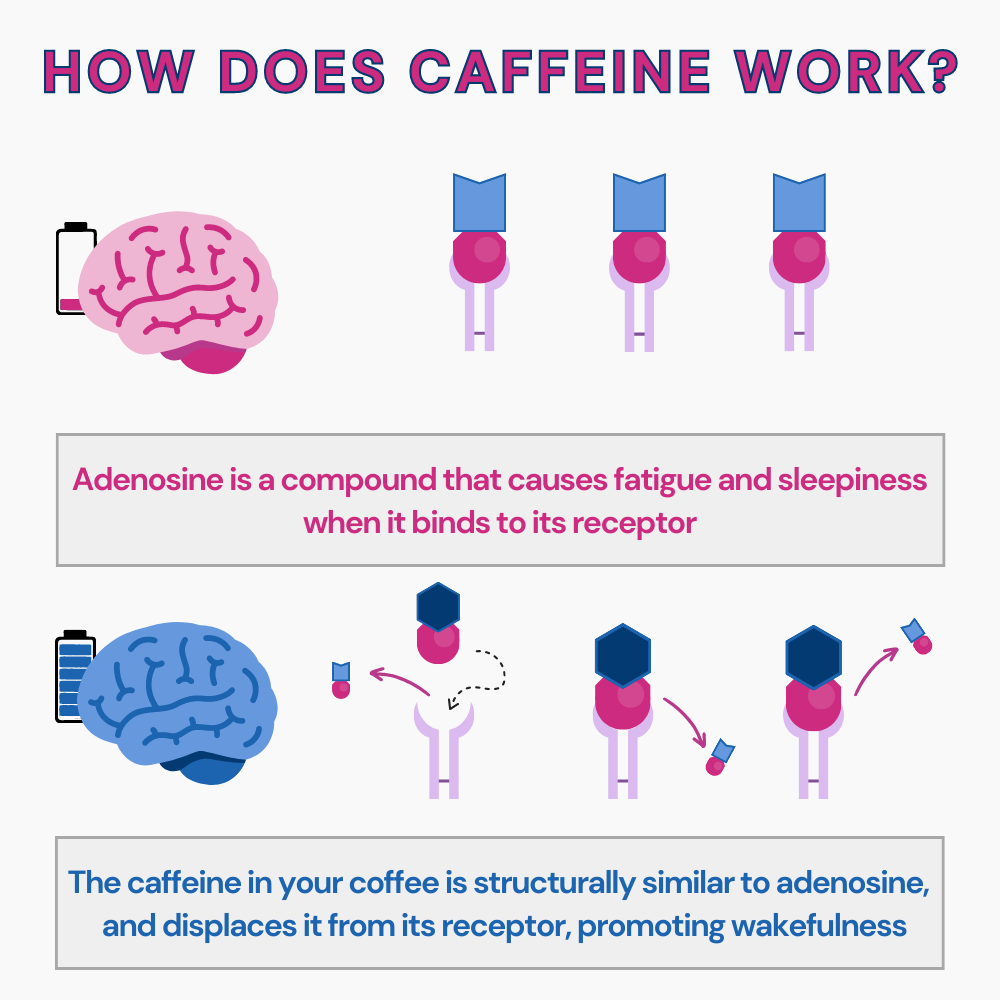
For a long time now, it has been believed that the caffeine in coffee gives people an energy boost, focus, and other mental changes.
However, a 2023 study published in the Frontiers in Behavioral Neuroscience reports that some of these changes could be an imaginary sensory effect of drinking morning coffee and unrelated to caffeine intake.
Coffee brings various physical and mental changes to the body.
Not all of these changes are recorded or explained.
A group of researchers conducted Functional Magnetic Resonance Imaging (fMRI) on habitual coffee drinkers to understand the neurobiological impact of the drink.
Two groups of participants were a part of this study.
Coffee group - 47 individuals with an average age of 30
Caffeine group - 36 individuals with an average age of 32.1
The fMRIs of the study participants analyzed changes in the Default Mode Network (DMN), the higher visual network, and the Right executive control network (RECN).
DMN is a group of brain areas that activate when the person is not focused on what’s happening around them.
The DMN system has been associated with various mental health conditions like depression and anxiety.
The RECN is responsible for the brain's information manipulation, decision-making, and problem-solving capabilities.
Higher visual networks of the brain are areas associated with complex visual response processes.
The study observed interesting differences in the fMRIs of the coffee and caffeine groups.
The fMRI data of coffee drinkers reveal the following.
One of the interesting observations of the study was the effect of caffeine and coffee on the posterior DMN connectivities, especially in the precuneus region.
Precuneus is associated with tasks like self-consciousness, cue reactivity, integration of information, and memory retrieval.
The decreased nodal connectivity in the precuneus region could be why people experience higher preparedness from rest to action mode.
Another interesting observation was the decreased functional connectivity between the motor networks and prefrontal cortex after consuming coffee and caffeine.
According to these researchers, this connectivity trend could be a reason for increased preparedness for action in coffee drinkers.
A stark difference in the fMRI of coffee and caffeine drinkers was that only coffee drinkers experienced increased connectivity in the higher visual and RECN networks.
This increase wasn’t noticed in the caffeine group.
According to these experts, other components of coffee could be causing higher connectivity in executive control and visual imagery.
These experts feel that an imaginary sensation could trigger the pleasure responses in coffee drinkers.
This imaginary sensation has nothing to do with the already established neurochemical responses.
It is, instead, associated with the sensory experiences of sipping a cup of coffee.
This study concludes that coffee's effects, like alertness to external stimuli and being prepared for action, could all result from other complex compounds in the drink and not due to caffeine.
These researchers report two different responses to coffee in the brain - the neurochemical effects of caffeine in the body and brain and the sensory experiences of the beverage.
While the neurochemical responses can be attributed to caffeine, the sensory experiences must be explored further.
The sensory experience could be a placebo effect of drinking the beverage, a response to the relief from caffeine withdrawal, or a result of other coffee compounds.
The researchers mention that fMRIs can be stressful to some people and this may have skewed the results.
The absence of a non-drinker control sample is a limitation of the study too. This could have helped rule out withdrawal symptoms as a reason for these sensory changes.
The fMRIs in this study only analyzed resting-state brain connectivity. Measuring the connectivities in task-oriented states may provide more precise results.
How Genes Regulate The Effects of Caffeine on Sleep?
While coffee is certainly helpful in feeling more alert in the morning, here are other ways to move from rest to preparedness without depending on caffeine.
One of the easiest ways to feel more alert in the morning is to pull the window shades up and let sunlight enter the room.
You could also take a quick walk outdoors to soak up the sunlight.
Sunlight helps shake off the morning grogginess.
One of the main reasons people feel tired and sleepy in the morning is not having 7-8 hours of restful sleep at night.
Going to sleep and waking up at set times and having a good night’s sleep can both help stay alert and active in the morning.
Even 10-15 minutes of exercise in the morning can help get the blood pumping across the body and brain and help clear up grogginess.
Consuming a protein-rich breakfast in the morning will help give the body the needed energy to go through the day actively and with better focus.
Some medications you take may cause grogginess and excessive daytime sleepiness.
Talk to your doctor about this in that case, and try switching medicines or altering doses.
for Osteoarthritis
The Gene Nutrition panel of Xcode Life includes 47 important nutritional aspects. 10 significant markers are analyzed for caffeine consumption and metabolism.
If you have done an ancestry genetic test with companies like 23andMe, AncestryDNA, MyHeritage, etc., you can learn your CYP1A2 gene status in just 3 steps.
Not yet tested?
If you're new to the world of genetic testing, we've got you covered!
You can now get your ancestry DNA kits at an additional discount!
By following the link provided in this article, you can purchase a DNA kit at 10% OFF (the discount will be reflected when you add the product).
This will ensure that you have everything you need to embark on your genetic journey.
Once you receive your kits, you can follow the instructions given by the respective service providers to collect your sample and ship it.
After you receive your DNA test results from the kit, you can upload your DNA data to our secure platform.
https://www.frontiersin.org/articles/10.3389/fnbeh.2023.1176382/full
https://www.ncbi.nlm.nih.gov/pmc/articles/PMC4997286/
https://www.ncbi.nlm.nih.gov/pmc/articles/PMC3777290/
https://pubmed.ncbi.nlm.nih.gov/15635355/
https://pubmed.ncbi.nlm.nih.gov/1356551/
https://medlineplus.gov/caffeine.html
https://my.clevelandclinic.org/health/articles/22581-dopamine
https://www.intechopen.com/chapters/71528
https://www.webmd.com/sleep-disorders/ss/slideshow-wakeup-tips
Botox for hair loss - doesn’t this sound exciting?
Botox injections have become one of the favorite cosmetic procedures performed worldwide to help reduce the signs of aging.
Researchers are now exploring using osteopontin in skin moles to accelerate hair growth in people with baldness and hair fall.
If successful, this may soon replace the need for expensive hair transplantation surgeries and help people with alopecia areata get a permanent solution to balding.
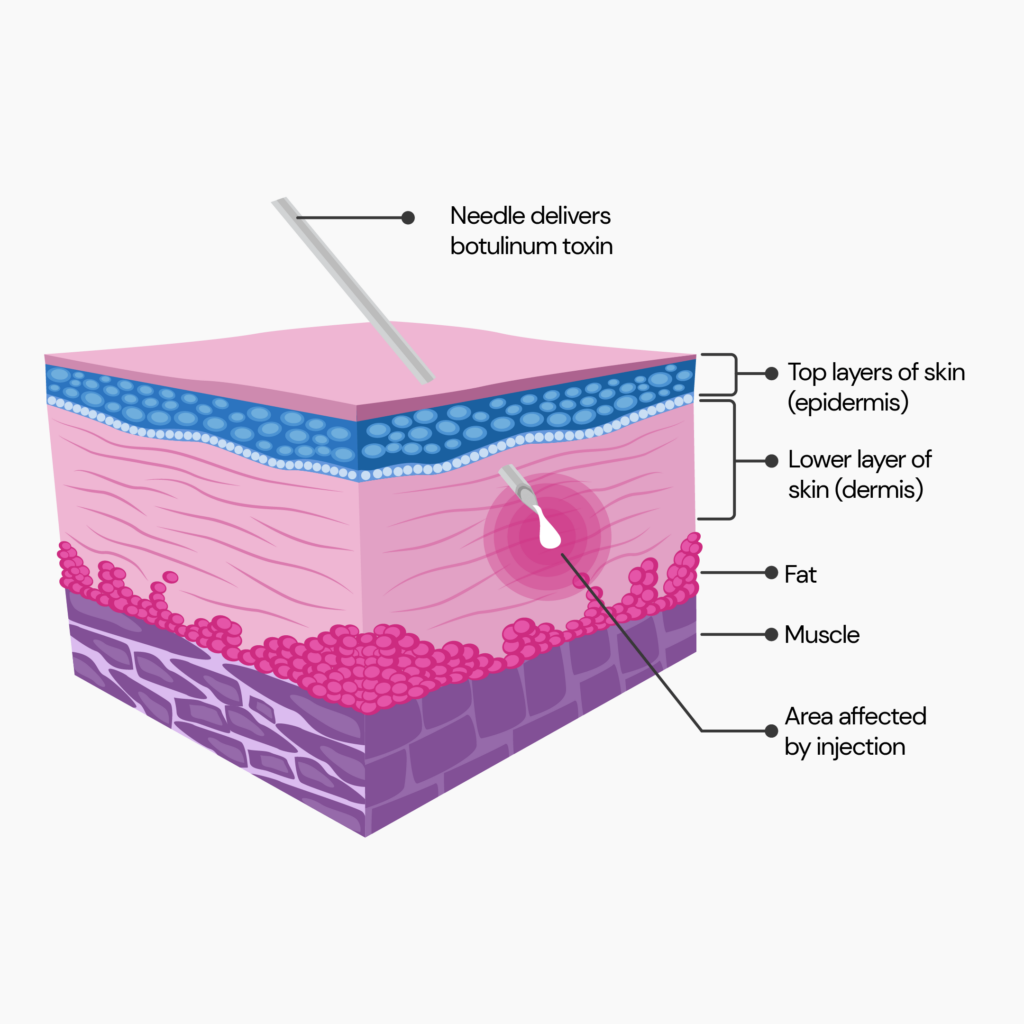
Botulinum toxin (botox) is a drug made from the Clostridium botulinum bacterium.
This bacterium causes a rare disease called botulism, characterized by muscle weakness, breathing difficulties, and even death.
In small doses, botox can help relax facial muscles and reduce the appearance of wrinkles, fine lines, and frown lines.
Botox functions by inhibiting the release of certain neurotransmitters in the muscles.
It is also sometimes used to treat certain health conditions like muscle spasms, excessive sweating, and migraine.
Botox injections are prevalent cosmetic procedures in the United States, with 3 million injections opted annually.
In recent times, there have been several products marketed as hair Botox.
However, these are not the same as Botox injectables for the skin.
Hair botox is just an attractive name given to hair nutrients created to give shinier, thicker, and lustrous hair.
Many of these hair nutrient masks contain collagen that coats the hair strands, making them look smoother, shinier, and thicker.
Such botox for hair loss products is available over-the-counter and has to be applied externally to the hair strands.
According to experts in the hair styling industry, these products don’t create any long-lasting impact and need to be used regularly to maintain the look.
Currently, researchers are exploring the idea of extracting a molecule from skin moles and using them to stimulate hair stem cells.
If successful, this could be the real ‘botox for hair loss’ people have been waiting for.

Melanocytes are cells that produce melanin.
Melanin is a pigment that gives color to our skin, eyes, and hair.
Sometimes, melanocytes group together and form patches on the skin, creating moles.
It is very common to see a single strand of thick hair growing from the center of skin moles in the body.
Researchers have now identified a particular compound in these moles that cause overproduction of these hair strands.
This compound also leads to hair growing darker and thicker.
They now want to explore the idea of using cells from the mole to create botox-like injectable solutions for the hair.
In June 2023, Wang, Plikus, and their team published an article in Nature that explored the effect of hyperactive melanocyte cells on hair growth.
In simpler terms, this is being called botox for hair loss.
According to the researchers, melanocytic moles or nevi in the skin often display excessive hair growth.
The researchers believe that this could be because of hair stem cell hyperactivity.
They are exploring the idea of extracting the molecules that lead to hyperactivity and injecting them in balding areas of the scalp to promote hair regrowth.
This study was performed on mice models.
The effect of hyperactive melanocyte cells on human balding and hair loss is yet to be studied.
The study identified a molecule named osteopontin in hairy moles that wasn’t found in significant amounts in regular skin cells.
Osteopontin is a type of signaling protein that plays a role in multiple biological processes, including:
According to the researchers, osteopontin could cause thicker, denser hair strands to grow from moles.
Osteopontin was predominantly found in higher quantities in aged melanocytes (senescent cells).
Researchers report that this signaling protein in senescent cells could activate dormant hair cells into their anagen phase (growth phase).
This could be why hairy moles develop thicker hair very quickly.
Hair loss is usually a result of the decrease in the quantity of signaling proteins in the hair follicles, which activate the anagen phase.
By extracting osteopontin and micro-injecting it into the cells on the scalp of mice models, the researchers were able to promote better hair growth.
They want to experiment with the same effect on human hair stem cells to see if this would solve alopecia and general hair loss.

In some cases of hair loss, the stem cells of hair may have remained dormant for a very long time.
Researchers aren’t sure if such dormant cells can be reactivated again with this method.
Even with osteopontin, the new hair growth would depend on the features of the hair follicle.
So, it may not be possible to grow thicker and lustrous hair in everyone who uses this botox for hair loss.
If a person always had thin and brittle hair, they would probably regrow hair with similar features.
Right now, the only permanent cure for baldness is hair transplantation surgery.
Not many choose to opt for this invasive and expensive process.
Only a handful of FDA-approved alopecia products are on the market; these don’t work 100% for everyone.
As this research progresses, there is hope for people with balding and excessive hair fall issues to regrow their hair back without surgery.
Amplifica, a biopharmaceutical company based out of California, has just started human trials on this botox for hair loss treatment.
According to Amplifica, the first human dose was given on June 27th, 2023.
The researchers at this biotech company expect the study to be completed by the first quarter of 2024.
Meanwhile, other companies could also explore these botox for hair loss treatments and produce results earlier.
Oral Minoxidil For Hair Loss: A Complete Guide
https://www.ncbi.nlm.nih.gov/pmc/articles/PMC5782443/
https://www.nature.com/articles/s41586-023-06172-8
https://medlineplus.gov/botox.html
https://www.cdc.gov/botulism/index.html
https://www.mayoclinic.org/tests-procedures/botox/about/pac-20384658
https://www.ncbi.nlm.nih.gov/pmc/articles/PMC7874868/